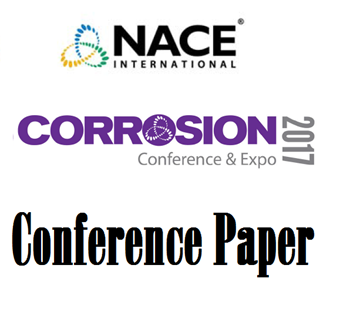Search
Corrosion Monitoring and Control
View as
Sort by
Display
per page
Deterioration of Wastewater Treatment and Collection System Assets: Knowing Where and How to Look
Product Number:
41206-271-SG
Publication Date:
2006
$20.00
Determination Of Oxygen Limits For Corrosion Resistant Alloys (Cras) In Oil & Gas Produced Water Based On Electrochemical Test Methods – Part 1
Product Number:
51322-17939-SG
Publication Date:
2022
$20.00
Determination Of Oxygen Limits For Corrosion Resistant Alloys (Cras) In Oil & Gas Produced Water Based On Electrochemical Test Methods – Part 2.
Product Number:
51322-17947-SG
Publication Date:
2022
$20.00
Developing a Wastewater Treatment Plant Coating Maintenance Program
Product Number:
41206-244-SG
Publication Date:
2006
$20.00
Developing and Managing a Coatings & Linings Program in an Electric Utility
Product Number:
51317--8812-SG
ISBN:
8812 2017 CP
Publication Date:
2017
$20.00
Development Of A F22 Compatible Scale Inhibitor
Product Number:
51322-17610-SG
Publication Date:
2022
$20.00
Development of a Slurry Erosion Test standard of Industrial Maintenance Coatings
Product Number:
41215-936-SG
Publication Date:
2015
$20.00
Development Of An Efficient MIC Mitigation And Control Strategy In Pipelline Pigging Operations
Product Number:
51322-17632-SG
Publication Date:
2022
$20.00
Development Of Fes Scale Control Technology Using Polymeric Dispersants In Sour Environment
Product Number:
51322-17630-SG
Publication Date:
2022
$20.00
Development Of For Multifunctional (Pit Detection + ER) Corrosion Monitoring Probe For Oil And Gas Internal Pipelines
Product Number:
51322-17820-SG
Publication Date:
2022
$20.00
Development Of High Velocity Oxygen Fuel (HVOF) Corrosion Resistant Coatings; A Comparison Between Novel High Entropy Alloy (HEA) And Conventional Cermet Coatings For Geothermal Applications
Product Number:
51322-17675-SG
Publication Date:
2022
$20.00
Development of Iron Sulfide Scale Inhibitor For Ultra-Tight Sandstone
Product Number:
51322-17896-SG
Publication Date:
2022
$20.00












